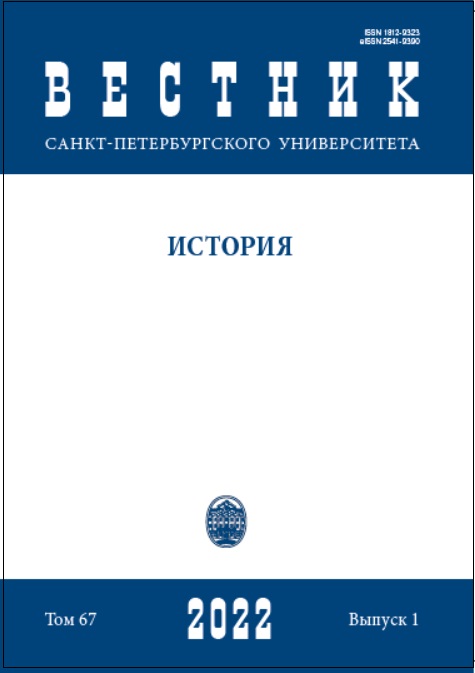All-Estate Military Draft and the Caucasus in the Russian Government Policy
DOI:
https://doi.org/10.21638/1701/spbu02.2022.102Abstract
A universal conscription system was introduced in Russia in 1874. For thirteen years special rules regulating enrollment of Caucasian peoples had been discussed by the government. With regard to this issue, eight special committees, commissions and sub-commissions were formed in St Petersburg and Tiflis; a number of meetings were held; and numerous notes and projects were written. The article analyzes the process of discussion of this complex and understudied topic in the government circles and Caucasian administration in addition to numerous projects and proposals related to these rules. It is notable that encouraging the highlanders of Caucasia to serve in the Russian army, St Petersburg tried to achieve several goals: firstly, to use their experience as excellent soldiers in the service in Caucasia; secondly, to ease the burden of military service in the inner provinces of Russia, and, finally, to quickly incorporate the peoples of Caucasia into the Russian Empire. As it was crucial to preserve the fragile stability in the region, the government approached the problem of conscription in Caucasia with great caution, considering the factor of ethnic, religious, and socio-cultural diversity of the region; the unstable situation there; the proximity of hostile Turkey; and the population’s fear of recruitment. The abovementioned discussions resulted in the special rules approved by Alexander III in 1886. Thus, the peoples of Transcaucasia, and “the alien population of the Terek and Kuban regions” were required to serve. The Muslim population of Caucasia was exempt from service which was replaced by a special tax.
Keywords:
military draft, the Caucasus, charter, recruits, conscription area, family lists, armed force, benefits, military tax
Downloads
References
References
Downloads
Published
How to Cite
Issue
Section
License
Articles of "Vestnik of Saint Petersburg University. History" are open access distributed under the terms of the License Agreement with Saint Petersburg State University, which permits to the authors unrestricted distribution and self-archiving free of charge.





